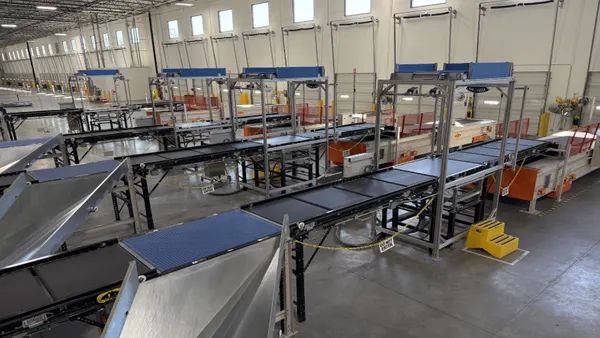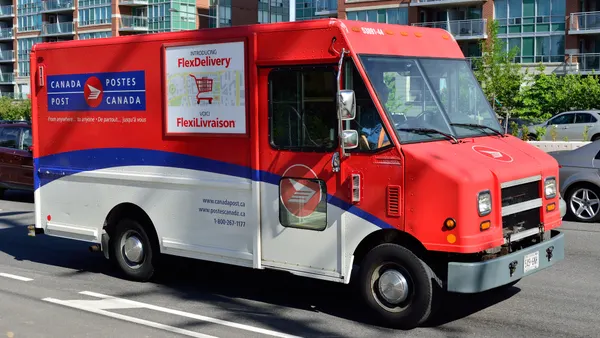Dive Brief:
- In the years since 2007, the average size of U.S. warehouses has increased by 143% to 184,693 square feet, with a corresponding ceiling height rise of 3.7 feet to an average of 32.3 feet, DC Velocity reported Tuesday.
- The largest expansions were urban. Atlanta warehouses became 284% larger, with Cincinnati following closely with a 237% increase. California's "Inland Empire," came third, growing by 222%.
- Markets lacking modern logistics facilities will likely experience continued construction as they work to catch up with consumer demand.
Dive Insight:
The growth of warehouse size directly aligns to the demand for merchandise sold via e-commerce.
As warehouses multiply in size and number, so do jobs, especially in previously abandoned regions, including those near ports, where stockpiled warehouses have eaten into peak season imports. And although demand for new warehouse space fell in the fourth quarter of 2016, leading experts to suggest market equilibrium had been reached, the size of new warehouses contradicts that prediction.
The massive increase in size is not merely the result of more goods on hand, according to the Global Head of Industrial and Logistics Research for CBRE, David Egan.
"Think of it like this: when you buy a box of Christmas lights, they're nicely packed and organized. When you try to get them back in the box, however, it's not so easy to regain that initial order," Egan told Supply Chain Dive.
"Merchandise comes into the warehouse in a nice tight arrangement," he said. "But then it gets broken up and sold in fragments of the whole, and the remainder just never gets easily organized. Then you have the staff that has to deal with the items in their disarranged state, and that takes up space as well."
Supply chain managers keep the flow intact, he noted, so expanding one's warehouse is more than just tacking on extra rooms and raising the roof — it involves a cohesive company effort to expand and scale all aspects of the supply chain.
"The job has become much more difficult, if only because of scale," he explained. "If warehouses hadn't begun expanding, workers dealing with the increase of merchandise wouldn't be able to keep their heads above water. Supply chain managers have to keep the goods coming in. Without them, the process falls apart."













